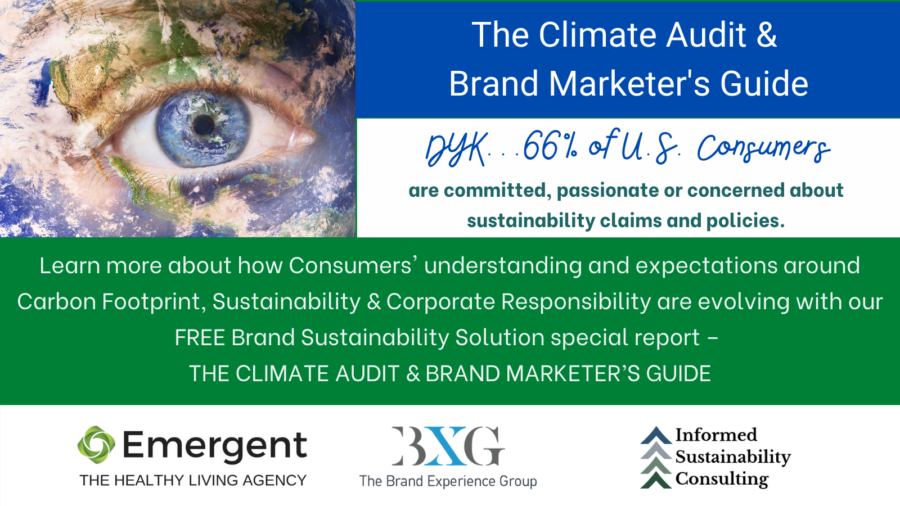
After a Decade of Decline, Brand Investment is Back
September 18th, 2021 Posted by Emergent Agency Services, Brand Design, brand marketing, brand messaging, brand strategy, Brand trust, Consumer insight, Differentiation, Emotional relevance, engagement, Marketing Strategy, storytelling, Strategic Planning 0 comments on “After a Decade of Decline, Brand Investment is Back”Consumers are human beings, not data points
As part of our ongoing series devoted to strategic planning guidance, we bring a mission critical recommendation on where to place your planning emphasis for 2022:
Brand building has returned to the fulcrum of marketing and business strategy leadership. After a decade of holding all the cards as a budget and plan priority, digital performance marketing has lost a bit of its luster. Customer acquisition costs are on the rise. There’s also a companion decline in the supply of digital ad inventory.
The creative deployment of your brand as ultimate differentiator and emotional connector should return to the strategic planning front burner.
Rethinking the path to business growth
- Brand building: securing your position, uniqueness, values, mission and emotional equity.
- Performance spending: driving the conversion funnel and revenue metrics.
These two approaches are not necessarily fighting one another. Both can enhance the outcomes of the other. Consumers, however, are the deciders. Their behaviors inevitably tipped the scale in favor of enhanced brand building. Now over-saturated and swimming in an ocean of digital content, people have evolved looking for deeper meaning and values in the brand relationships they care about. Digital native brands like Allbirds and Warby Parker saw this coming and pivoted to focus on brick-and-mortar retail so they can create richer in-person experiences with their brands.
Brands have always been valuable – but in recent years lost their priority in the marketing plan to the ease and electronic allure of digital data ROI claims. The untold part of this story: tech platforms usurped the essential role of brand building investment, ushering in another consequence: the splintering of agency partner resources. A thousand platform specializations emerged as companies looked for the next shiny new tech Saas solution that promised glorious, algorithm and data-driven performance.
Thus, marketers also found themselves managing a disparate cadre of specialists du jour – a digital ad firm, digital media vendor, a social media agency, a PR agency, an influencer agency, a brand collaboration firm, et al. What’s the net result of all these different tactical players and layers? A soup of varying voices and fragmented messaging that increasingly sounds like a confederation of a thing, and a thing, and a thing – opposed to a unified, consistent and differentiated brand.
Time to think differently!
The transition to brand investment is being helped along by Apple’s no tracking opt-out privacy move and Google’s coming shutdown of cookies that suspends individual tracking in favor of a cohort-based system (shared tastes).
These modifications to digital stalking of user behavior are ultimately a good thing for the health and growth of your business, and here’s why: it’s time to reinvest in your brand, the single most important ownable and differentiating asset you have in an otherwise vast sea of equivalency and similarity.
- Marketers are learning the absence of real strategic investment in developing brand distinction and deeper experience is now holding them back from optimal growth results and competitive advantage.
Why?
Brands are uniqueness generators, deeper meaning vessels and trust-creating reservoirs of mission and values. You are operating in a consumer world increasingly drawn to aligned, kindred and symbol-inspired relationships – more so than transactional, follow-me-around-the-web ‘buy me now’ offers.
What dampened the primacy of brand building in the first place?
A digitally-enabled explosion of performance marketing tools pushed communications and content to a tactical model founded on conversions and revenue metrics. See you later, brand building. Hello targeting, tracking and clicks.
The great promise of infinite ROI on digital ad spending with Facebook and Google spawned a proliferation of specialist ad tech firms all looking for their piece of the eyeball pie – retargeting, digital media buying, affiliate programs –all while brand support took a raincheck.
Furthermore, the marketplace bar for entry of new brands became so incredibly low, it fomented a tsunami of digital ad content that is piling up in consumer feeds – all clamoring for a sliver of limited time and attention. Very noisy. Transactional. Less engaging and lacking lifestyle relevance.
Guidance for your brand strategy planning effort
As a general rule radical differentiation, higher purpose and emotional connection are the three legs on which to center your strategic plan.
- Differentiation is essential to separation and standing out – consumers will notice you
- Higher purpose imbues your brand with deeper meaning and values – how they trust you
- Emotion is at the center of what drives consumers to act, make decisions – humans are feeling creatures who think
The goal of your planning is to optimize strategy for greatest impact. To enhance equity and the values your brand exudes. To create attraction, allure and stickiness. To win hearts because it’s always heart-over-head.
Here are four areas of focus that will help you win with a stronger brand:
- Aligned values
Insight research continues to reinforce that consumers’ care deeply about shared values and mission. They want to know what you believe in, what you stand for, that you have a soul which transcends commerce. They “wear” your brand as a symbol and flag to the world around them about what they value. What meaning are you giving them, and is it aligned with their beliefs
2. Experience satisfaction
Are they happy with the product-use experience, with the purchase journey, are you easy to do business with, do you put them first in ways that are both unselfish and also obvious to them? Do they learn from you? Is your brand a guide, coach and enabler of activities, experiences that matter to them? You are providing more than a product.
3. Memorable messaging
How do you stand out and engage people? The consumer is the hero of your brand story – it should be about their needs, wants and aspirations. Your brand’s role in the relationship is as guide and advisor to help them achieve their goals and ambitions. Neuroscience tells us that 98% of actions taken by consumers comes from an emotional response, not an analytical one. Is your communication informed by emotional messaging.
4. Your brand’s share of culture
What is the social conversation about your brand? What people are seeing and hearing about your brand in the micro-communities of influence that they belong to? It is critical to the ecosytem “buzz” they encounter. People respect the voices of their peers and credible experts. For the very reason that nearly 100% of the time the primary motivation in deciding what to buy is their fear of making a bad decision. You need to build a sphere of trust.
If these ideas and concepts resonate with you, now is a good time to bring some fresh thinking and perspective to investing in your brand. Use this link to tell us what concerns you have, what keeps you up at night. We can help you map the right path to brand growth, which is linked directly to your business outcomes.
Looking for more food for thought? Subscribe to the Emerging Trends Report.
Bob Wheatley is the CEO of Chicago-based Emergent, The Healthy Living Agency. Traditional brand marketing often sidesteps more human qualities that can help consumers form an emotional bond. Yet brands yearn for authentic engagement, trust and a lasting relationship with their customers. Emergent helps brands erase ineffective self-promotion and replace it with clarity, honesty and deeper meaning in their customer relationships and communication. For more information, contact [email protected] and follow on Twitter @BobWheatley.




